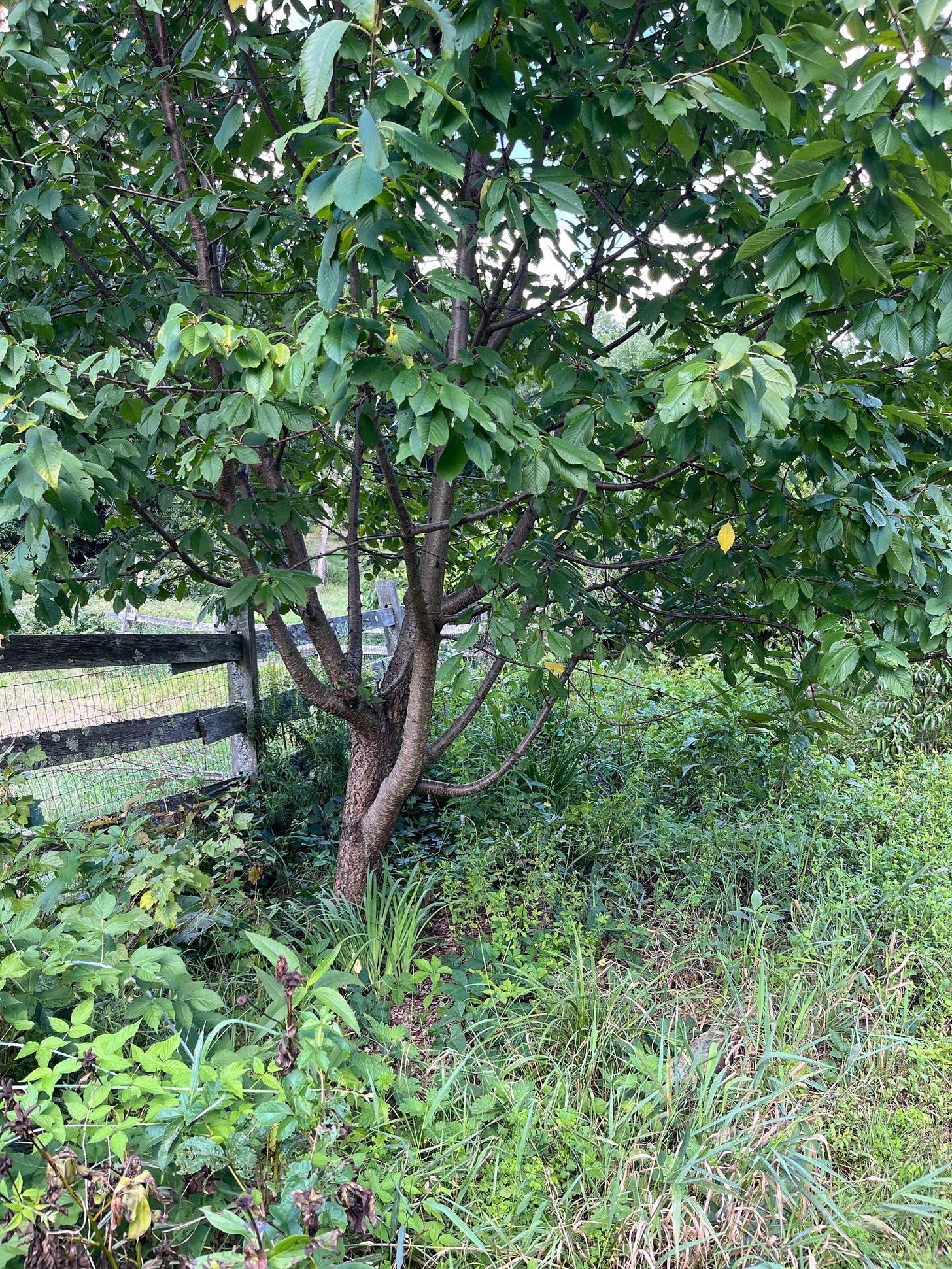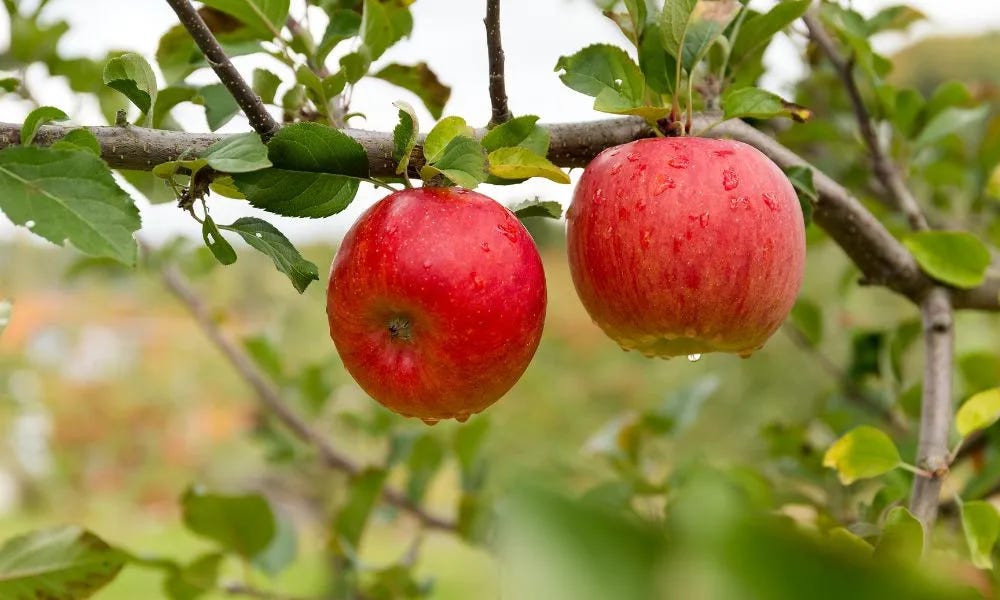When we first started putting fruit trees onto our property (well over 10 years ago), we spent a lot of time researching the best strategies for supporting healthy growth without the need for intensive fertilizers and bug sprays. We based a lot of our orchard design on the book the Holistic Orchard (one of our favorite homesteading books.
Over the years as our trees have grown - we adapted our design even more and purposely designed tree guilds around some of our trees. This is a continual process as the trees grow and create more shade and we’re continuing to adapt and learn as we go. Below I share a few highlights of creating tree guilds and what we’ve learned.
What is a Tree Guild
A tree guild is a key concept in permaculture that involves designing a mutually beneficial group of plants around a central tree. This concept mimics the natural relationships found in forests, where diverse plants coexist and support each other.
The central tree serves as the main element, providing shade, shelter, and a habitat for other plants, which in turn contribute to the tree's health and productivity. These supporting plants are selected to fulfill specific roles such as attracting pollinators, repelling pests, enhancing soil fertility through nitrogen fixation, or suppressing weeds.
Elements of a Tree Guild
You generally see guilds described for an apple tree, but the same principles can be applied to other fruiting trees.
Fruit Tree: This serves as the central element of the guild. A standard-sized apple tree is often preferred for its robustness. As the tree matures and creates more shade, the plants beneath it will need to be adapted. Starting with a healthy tree is ideal, but creating a guild around an older tree can also aid in its restoration.
Support Plants: These plants assist the apple tree by providing essential functions like nitrogen fixation or nutrient accumulation. Examples include legumes (like clover, peas, and beans), which fix nitrogen, and dynamic accumulators that draw nutrients from deep in the soil.
Ground Cover Plants: Low-growing plants such as strawberries, creeping thyme, or chamomile are used to cover the soil, reducing weed growth, retaining moisture, and providing a habitat for beneficial insects.
Nutrient Accumulators: Plants with deep taproots like comfrey, yarrow, and dandelions pull nutrients from the deeper soil layers, making them accessible to the apple tree.
Insectary Plants: These plants help manage pest populations and attract beneficial insects. Flowering plants attract pollinators, while herbs like chives, dill, fennel, marigolds, garlic, and onions can repel harmful pests.
Companion Plants: The previously mentioned plants all act as companions, creating a supportive environment around the apple tree. A diverse range of companion plants can enhance the health and productivity of the tree.
Bulbs to Deter Rodents: Planting bulbs such as daffodils or tulips at the base of the tree can deter rodents from chewing on the bark.
Fungi: Mycorrhizal fungi form symbiotic relationships with the apple tree's roots, aiding in nutrient uptake. Promoting the growth of beneficial fungi is crucial, and can be supported by minimizing soil disturbance and integrating the plants mentioned above.
Common Plants for a Tree Guild
Comfrey – Dynamic accumulator, brings up nutrients.
Clover – Nitrogen fixer, improves soil fertility.
Yarrow – Nutrient accumulator, attracts beneficial insects.
Dill – Insectary plant, attracts pollinators and beneficial insects.
Chamomile – Ground cover, suppresses weeds, attracts beneficial insects.
Oregano – Ground cover, suppresses weeds, culinary herb.
Strawberries – Ground cover, suppresses weeds, edible fruit.
Marigolds – Insectary plant, deters pests, attracts pollinators.
Grapes – Support plant, provides shade, edible fruit.
Garlic – Companion plant, deters pests, culinary herb.
Steps for Creating a Tree Guild
Step 1: Choose a site the recieves ample light. Prepare the soil by digging a large hole and incorporating organic matter into the soil. Plant you apple tree in early spring when the tree is still dormant.
Step 2: The area right around the trunk (about a 2 foot radius) should be free of plants and grass in particular. Around this ring, plant bulbs. You can use small rocks or mulch to keep weeds out of this area. Keep this area weeded, especially during the first 5 years.
Step 3: Plant in your companion plants. It’s best to do this early on so you don’t need to disturb the soil as the tree matures. Plant the guild using a combination of plants from above making sure to get a diverse assortment that benefit the tree in different ways.
Step 4: Maintain your tree guild – continue to make adjustments based on your observations of the plants and the health of the apple tree.
Happy Homesteading,
Gretchen




